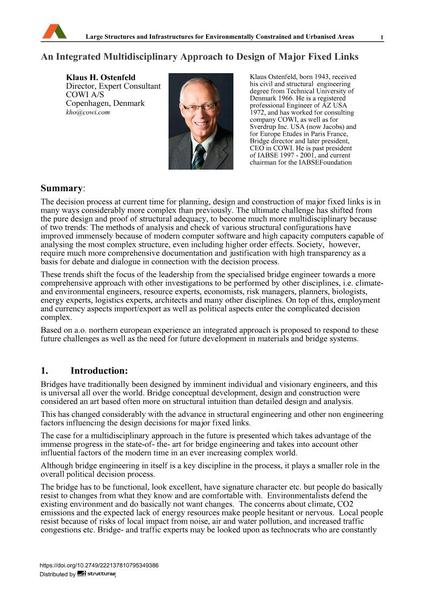|
Abstract:
|
The decision process at current time for planning, design and construction of major fixed links is in many ways considerably more complex than previously. The ultimate challenge has shifted from the pure design and proof of structural adequacy, to become much more multidisciplinary because of two trends: The methods of analysis and check of various structural configurations have improved immensely because of modern computer software and high capacity computers capable of analysing the most complex structure, even including higher order effects. Society, however, require much more comprehensive documentation and justification with high transparency as a basis for debate and dialogue in connection with the decision process. These trends shift the focus of the leadership from the specialised bridge engineer towards a more comprehensive approach with other investigations to be performed by other disciplines, i.e. climate- and environmental engineers, resource experts, economists, risk managers, planners, biologists, energy experts, logistics experts, architects and many other disciplines. On top of this, employment and currency aspects import/export as well as political aspects enter the complicated decision complex. Based on a.o. northern european experience an integrated approach is proposed to respond to these future challenges as well as the need for future development in materials and bridge systems.
|

